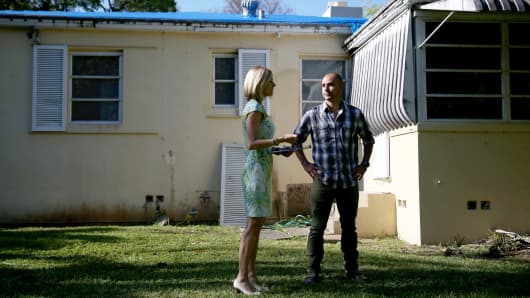The highest interest rates in well over a year are putting a dent in the mortgage business.
Total mortgage application volume fell 9.4 percent last week versus the previous week, on a seasonally adjusted basis. The Mortgage Bankers Association adjusted the weekly reading to account for the Thanksgiving holiday. Volume was 0.5 percent lower than the same week one year ago, the first annual drop in total volume since January.
“Mortgage lenders have been very thankful for a strong 2016 in terms of origination activity. However, mortgage application volume in the Thanksgiving week dropped sharply to the lowest level since early January, as mortgage rates increased to their highest point since July, 2015,” said Michael Fratantoni, chief economist for the MBA.
Refinance volume has been falling steadily as rates rise, but it took another sharp drop, down 16 percent for the week, seasonally adjusted. Refinances are most rate sensitive and are now down 3 percent from a year ago, when rates were not much different than they are today.
The average contract interest rate for 30-year fixed-rate mortgages with conforming loan balances ($417,000 or less) increased to 4.23 percent last week from 4.16 percent, with points increasing to 0.41 from 0.39 (including the origination fee) for 80 percent loan-to-value ratio loans.
That rise was a continuation of a sharper jump following the election of Donald Trump. While refinance volume also fell the previous week, mortgage applications to purchase a home rose sharply two weeks ago. That surge may have been buyers on the fence rushing to get in, fearing rates would move higher, as they did. Purchase volume last week was essentially flat, falling 0.2 percent and volume was just 2.9 percent higher than one year ago.
“The mix continues to shift towards higher balance loans, as the average purchase loan size reached a new survey record,” Fratantoni said. “First-time buyers and buyers of lower priced units may have stepped away from the market to some extent given the jump in rates.”
The average rate for 30-year fixed mortgages with jumbo loan balances is lower than conforming, at 4.18 percent. Banks largely hold these pricier loans on their own balance sheets rather than selling them to Fannie Mae or Freddie Mac; they can therefore offer slightly lower rates.
The share of FHA applications fell to 10.4 percent compared with 11.7 percent the previous week. FHA is mostly used by lower income or first-time borrowers, so it is not surprising that share would drop. These borrowers are hardest hit by higher interest rates, as they are generally right on the margins of home ownership.
Mortgage rates edged slightly lower at the beginning of this week but the average rate on the 30-year fixed is still above 4 percent. This is the first move lower since the election, but markets are volatile.
“This could be viewed as the first evidence that rates are topping out in the recent range and thus [one could] consider waiting for more potential improvement,” said Matthew Graham, chief operating officer of Mortgage News Daily. “Waiting is risky, of course.”

